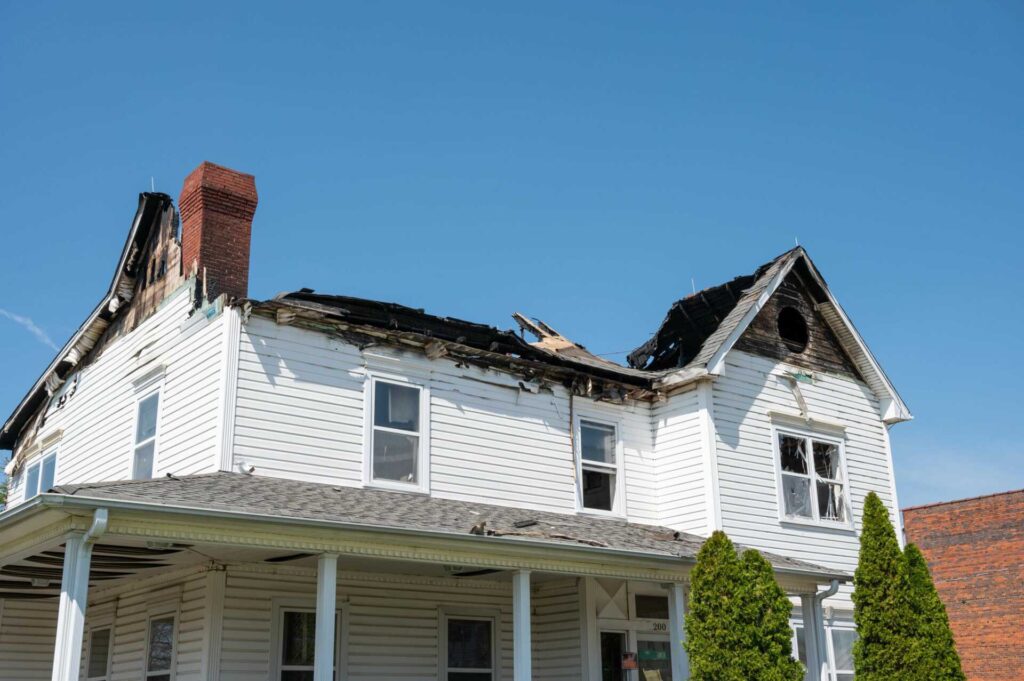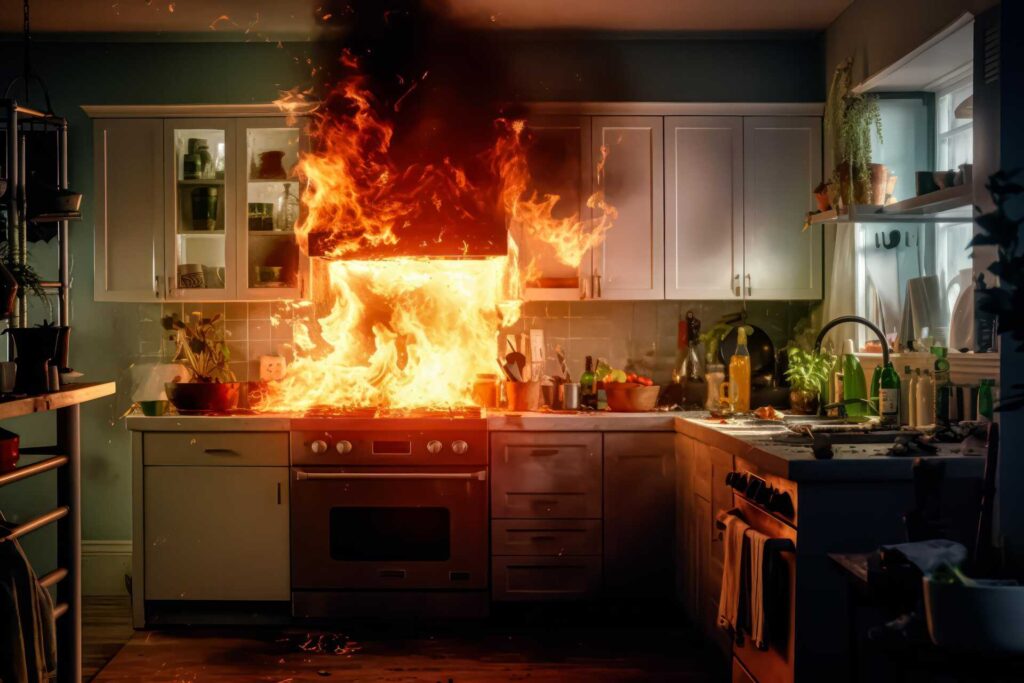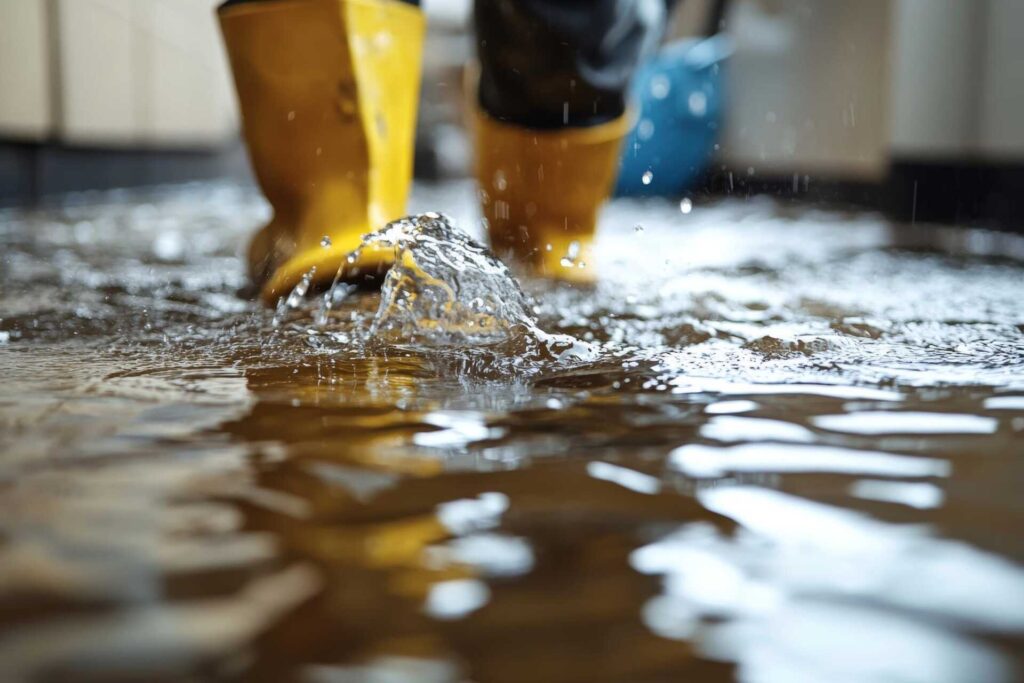
Contents
Like a phoenix rising from the ashes, your home can recover from fire damage with the right fire damage cleanup methods. You’ll need to start with a thorough assessment and take safety precautions to protect yourself during the process. From removing debris to addressing lingering odors, each step is crucial for restoring your space. But what about the hidden threats like mold and water damage that can complicate your recovery? Understanding effective strategies will help you regain your home and prevent future issues.
Key Takeaways
- Conduct a thorough damage assessment and document findings for insurance claims and restoration plans.
- Ensure safety by wearing PPE and checking electrical systems before re-entering the property.
- Remove debris and damaged materials safely, disposing of hazardous waste according to local regulations.
- Utilize effective cleaning solutions and ventilation techniques to eliminate smoke odors and contaminants.
- Address water damage promptly with extraction, dehumidification, and mold prevention measures to protect your home.
Assessing Fire Damage
After a fire, the first step in your recovery process is assessing the damage. You need to conduct a thorough fire assessment to understand the extent of destruction caused. Start by documenting everything you see—take photos and make notes. This documentation will be crucial for insurance claims and restoration efforts. Look for signs of fire, smoke, and water damage, as these can significantly impact your home’s structure and safety.
Next, focus on damage evaluation. Check walls, ceilings, and floors for charring or discoloration. Pay close attention to electrical systems and plumbing, as fire can compromise their integrity. If you notice structural damage, it’s essential to contact a professional to assess whether the building is safe to enter.
Consider the contents of your home as well. Items may appear salvageable, but smoke residue can embed deeply into fabrics and materials. You’ll want to identify what can be cleaned versus what needs to be replaced.
Throughout this process, it’s normal to feel overwhelmed; you’re not alone. Many homeowners share similar experiences, and reaching out for support can be invaluable.
Safety Precautions to Take
Once you’ve assessed the fire damage, it’s vital to prioritize safety as you move forward. Taking the right precautions protects you and helps create a sense of security in an uncertain time.
Here are some essential safety measures to keep in mind:
- Wear Personal Protective Equipment (PPE): Always don gloves, masks, goggles, and sturdy shoes. This gear helps shield you from harmful debris, toxic smoke residues, and sharp objects.
- Ensure Proper Ventilation: Open windows and doors to allow fresh air in. This reduces exposure to hazardous fumes and assists in drying out any damp areas.
- Check Electrical Systems: Before re-entering, ensure that the electrical systems are safe. If you’re unsure, it’s best to call a professional to avoid potential shock hazards.
- Avoid Hazardous Materials: Stay clear of items that may have been affected by chemicals during the fire. These can pose serious risks to your health and safety.
Removing Debris and Ash
Before you start removing debris and ash, prioritize your safety by wearing protective gear and ensuring the area is stable.
Gather essential tools like shovels, brooms, and heavy-duty trash bags to make the cleanup efficient.
With the right preparations and equipment, you can begin restoring your space while minimizing further damage.
Safety Precautions First
Your safety is paramount when tackling the aftermath of fire damage, especially during the removal of debris and ash.
Before you dive in, it’s essential to prioritize fire safety and personal protection. Here are some crucial steps to ensure you’re safe while cleaning up:
- Wear Protective Gear: Equip yourself with gloves, a mask, goggles, and long sleeves to shield against harmful particles and sharp debris.
- Assess the Area: Take a moment to evaluate the structural integrity of your home. Look for any unstable surfaces or potential hazards before you start.
- Ventilate the Space: Open windows and doors to allow fresh air in, helping to disperse any toxic fumes generated from burnt materials.
- Gather a Support Team: Don’t go it alone. Recruit family or friends to help—this lightens the load and ensures that someone’s there to assist in case of an emergency.
Tools for Cleanup
After ensuring your safety and preparing the area, it’s time to gather the right tools for effective cleanup. You’ll want quality cleanup equipment to tackle the debris and ash left behind by the fire.
Start with a sturdy broom and dustpan to sweep up larger particles, followed by a vacuum equipped with a HEPA filter to capture fine ash and soot. This is crucial, as these particles can linger in the air and affect your health.
Don’t forget restoration tools, such as a pressure washer for exterior surfaces, which can help remove stubborn residues from walls and driveways. For indoor areas, consider using scrub brushes and sponges with appropriate cleaning solutions to eliminate smoke odors and stains.
A heavy-duty trash bag will help you dispose of debris efficiently. Always wear protective gear, like gloves and masks, to keep yourself safe while working.
Cleaning Smoke Residue
Cleaning smoke residue is crucial for restoring your home and ensuring a healthy environment.
You need to prioritize proper ventilation to help dissipate lingering odors and contaminants.
Additionally, using effective cleaning solutions specifically designed for smoke damage will enhance your efforts and yield better results.
Importance of Proper Ventilation
Proper ventilation is crucial when tackling smoke residue after a fire, as it helps to remove harmful particles and odors that can linger long after the flames are extinguished.
Effective airflow management plays a vital role in restoring a safe and healthy environment in your home. Here’s how you can ensure proper ventilation:
- Open Windows and Doors: This simple step can create cross-ventilation, allowing fresh air to circulate and push out smoke-laden air.
- Use Fans: Position fans near windows to help draw out smoky air while simultaneously bringing in cleaner air from outside.
- Check Ventilation Systems: Inspect your HVAC systems to ensure they’re functioning properly. Replace filters that may have trapped smoke particles.
- Create Negative Pressure: Utilize exhaust fans in kitchens or bathrooms to pull smoke out of the living areas, enhancing airflow management.
Implementing these strategies improves air quality and aids in the overall cleanup process.
Effective Cleaning Solutions
Dealing with smoke residue can be overwhelming, but using the right cleaning solutions makes a significant difference in your recovery process.
First, it’s crucial to choose eco-friendly cleaners that won’t harm your home or the environment. These cleaners effectively break down smoke particles without the harsh chemicals found in traditional products. Look for options that specifically mention their ability to tackle smoke odor and residue.
For deep cleaning, start by testing a small, inconspicuous area on your walls to ensure your cleaning solution won’t damage the paint or finish. Use a mixture of warm water and a gentle eco-friendly cleaner, applying it with a soft sponge or cloth. Work in small sections, rinsing frequently to avoid spreading residue.
Don’t forget to address fabrics and upholstery, as they often trap smoke particles. Use an eco-friendly fabric cleaner or a mixture of vinegar and water for this purpose.
Allow everything to air dry thoroughly, as moisture can lead to further complications. Navigating this process with care helps restore your space and creates a welcoming environment again.
Water Damage Mitigation
Water damage can escalate quickly, often causing significant issues if not addressed promptly.
After a fire, the water used to extinguish the flames can lead to further complications in your home. To effectively mitigate water damage, follow these essential steps:
- Water Extraction: Start by removing any standing water. Use a wet/dry vacuum for small areas or contact professionals for larger volumes. This step is crucial in preventing mold growth and structural issues.
- Moisture Control: Once the water is extracted, it’s essential to control the remaining moisture. Dehumidifiers and fans can help circulate air and lower humidity levels. This process reduces the risk of mold and aids in the drying of materials.
- Inspect and Remove Damaged Materials: Check for any structural damage or materials that can’t be salvaged, such as drywall or carpeting. Safely remove these items to prevent further deterioration and ensure a clean slate for repairs.
- Monitor for Mold Growth: Keep an eye on previously wet areas for signs of mold. It can develop within 24-48 hours, so regular checks are vital. If you spot any mold, consider contacting a professional for safe removal.
Odor Removal Techniques
After a fire, many homeowners notice persistent odors that can linger long after the flames are extinguished. These odors stem from burnt materials, smoke residue, and other contaminants. To reclaim your living space, it’s essential to employ effective odor-removal techniques that restore comfort and safety.
One of the primary methods involves using odor neutralizers. These specialized products break down odor-causing molecules, effectively eliminating the scent rather than just covering it up. Look for enzymatic or activated charcoal neutralizers, as they tend to yield the best results. Apply these to affected areas such as walls, carpets, and furniture, allowing them to penetrate and address the source of the odor.
If you’re dealing with particularly stubborn smells, you might consider professional-grade ozone generators or thermal foggers. These devices can permeate hard-to-reach spaces, neutralizing odors deeply embedded in materials. However, ensure you follow safety guidelines and evacuate the area while using these tools.
For a temporary solution, you may resort to scent masking. While this approach doesn’t eliminate odors, it can provide immediate relief. Use air fresheners or scented candles to create a more pleasant atmosphere as you work on deeper clean-up methods.
Restoring Affected Areas
Once you’ve addressed the lingering odors, the next step involves restoring the areas affected by fire damage. This process can be overwhelming, but by following proven fire restoration techniques, you can reclaim your space and bring it back to life.
Here’s a structured approach to guide you through the restoration:
- Assess the Damage: Start by evaluating the extent of the fire damage. Look for compromised walls, ceilings, and flooring. Identifying what needs repair is crucial for effective restoration.
- Conduct Structural Repairs: If any structural elements like beams, joists, or load-bearing walls are damaged, you’ll need to prioritize these repairs. Engage a professional if you’re unsure about the integrity of your home.
- Clean and Restore Surfaces: Use specialized cleaning agents to wash soot and smoke residue from walls and surfaces. Don’t forget to address fixtures and appliances, which may also harbor odors.
- Repaint and Redecorate: After cleaning, repaint affected areas with fire-rated paint to provide an extra layer of protection.
This step can significantly improve the aesthetics of your home and help restore a sense of normalcy.
Final Thoughts
In the aftermath of a fire, your home deserves the best chance at recovery. By carefully assessing damage, prioritizing safety, and employing effective cleaning methods, you can restore your space to its former glory. Think of your efforts as a phoenix rising from the ashes; with patience and determination, you’ll reclaim your home. Don’t hesitate to seek professional help if needed, as a comprehensive approach ensures lasting results and peace of mind in this challenging time.



